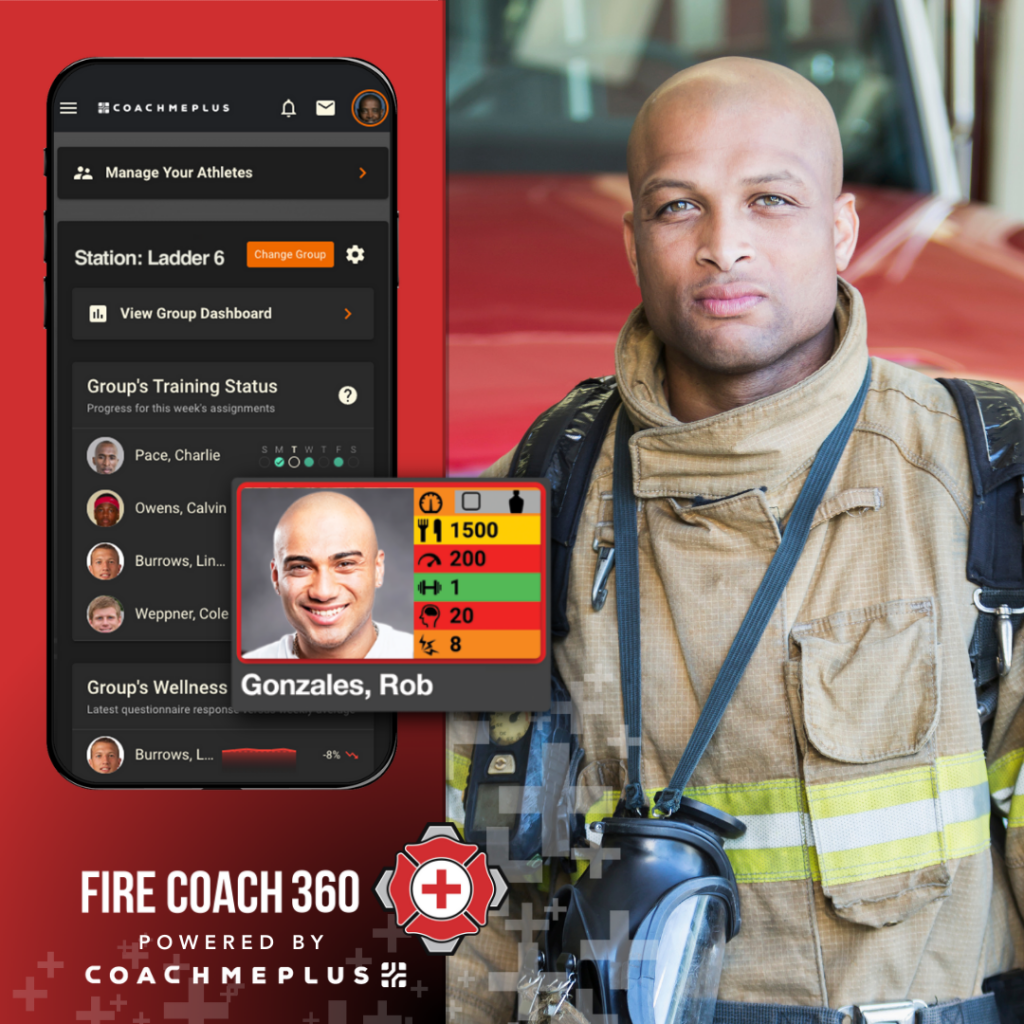Don’t let your firefighters get sidelined by preventable injuries. We’re diving into the common injuries that can be stopped, and how we can empower firefighters to stay safe. Let’s talk about the injuries we can, and must, eliminate.
Learn more about CoachMePlus solutions in the firefighter space with FireCoach360.
Musculoskeletal Injuries and Firefighters – Sprains, Strains, and Fractures

Firefighter injuries aren’t just painful, they’re expensive. Every sprain, strain, and fracture—the result of demanding, high-risk work—costs departments time, money, and manpower. Ladders, heavy gear, collapsing structures—these are the hazards. But twisted ankles and broken bones don’t have to be inevitable. Wellness initiatives, from targeted strength training to advanced protective equipment, are the key to eliminating and reducing these sort of injuries. Stronger firefighters are more resilient to the dangers of the job. The cost of not investing in these programs? Crippling: both in human suffering and the financial burden on departments.
Hydration: Firefighters’ First Line of Defense
Just a 2% decrease in body water can significantly impair a firefighter’s ability to perform high-intensity tasks.
The science is clear: dehydration compromises physical performance and increases injury risk and worse. Firefighters, working in sweltering conditions and heavy gear, are particularly vulnerable. Departments can combat this by establishing comprehensive hydration programs. These programs should include education on the signs of dehydration, personalized hydration plans based on individual needs, and accessible, chilled water and electrolyte solutions on every scene. Practical measures like pre-hydration, scheduled breaks, and post-incident rehydration are essential for safeguarding firefighter health and preventing costly injuries.
Meet with an expert to discuss the CoachMePlus Hydration Station.
Firefighters: Mental Health Under Fire
A study from the Journal of Occupational Health Psychology revealed 20% of firefighters and paramedics meet the criteria for Post Traumatic Stress Disorder during their career – compared to 6.8% for the general public. Firefighters also experience higher suicide rates.
Fire departments need more than just reactive counseling; they need data-driven insights into their firefighters’ mental health. CoachMePlus offers a secure and customizable platform to track key mental wellness metrics. This software allows departments to identify trends, pinpoint potential stressors, and provide targeted support, while ensuring individual privacy. By leveraging data, CoachMePlus empowers departments to create a proactive and personalized mental wellness program, fostering a culture of support and resilience.

–
Not all firefighter injuries are preventable, but by enacting a Wellness/Fitness Initiative (WFI), and by taking proactive steps for Hydration and Mental Wellness, Fire Departments can take an active step to ensure their firefighters are able to continue on the line of duty.

Recent Comments